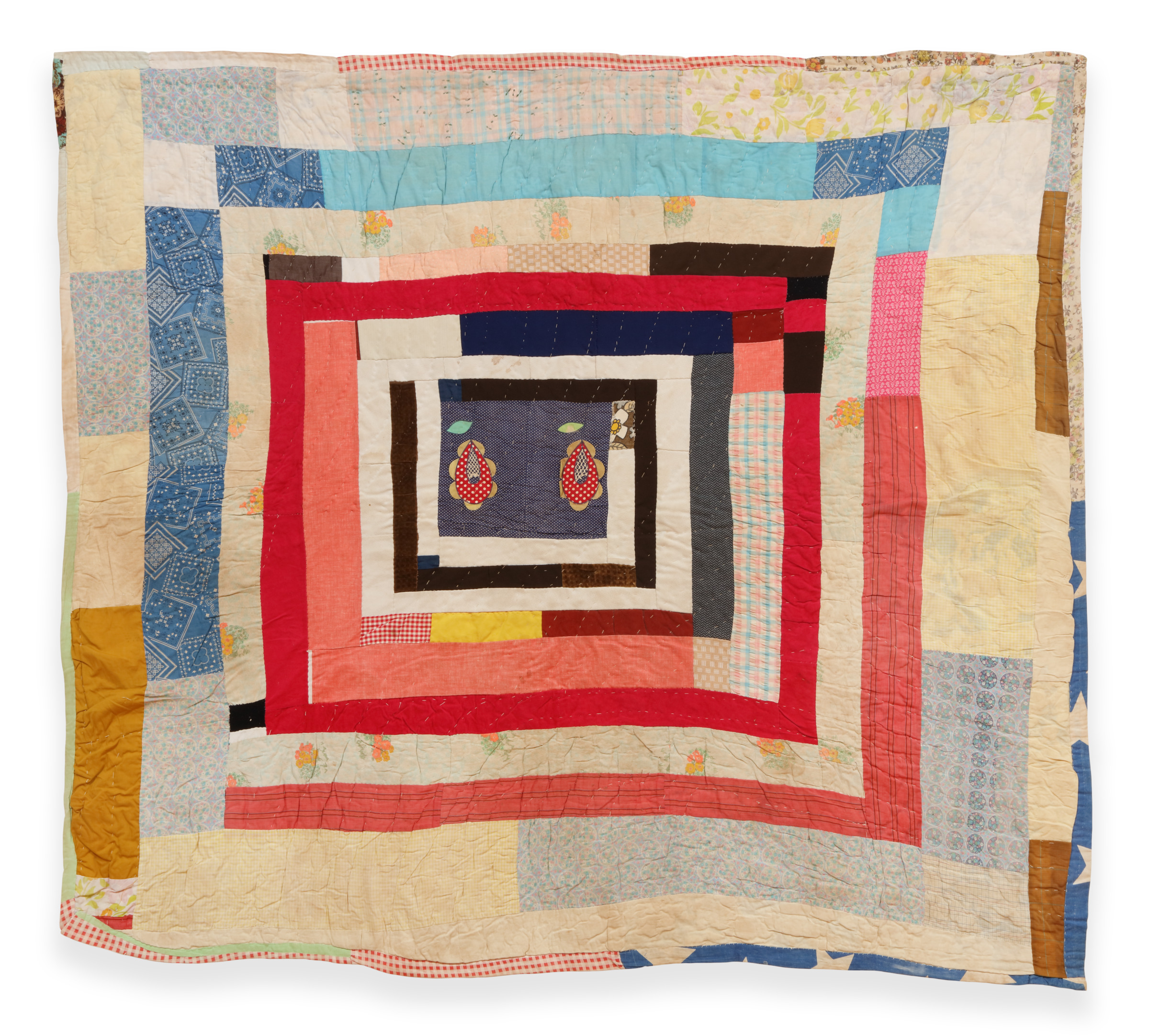Housetop by Annie Mae Young
Annie Mae Young (American, 1928–2013), Housetop, undated, fabric, 86 × 74 inches, High Museum of Art, Atlanta, museum purchase and gift of the Souls Grown Deep Foundation from the William S. Arnett Collection, 2017.79. © Annie Mae Young.

Keep scrolling down for a closer look at the quilt. ↓
Annie Mae Young preferred to work with cotton strips, which are abundant throughout this quilt: “I always like cotton, but not the other stuff too much. Didn’t like silk, or crepe, and didn’t use wool much. I stayed with what I started with: old clothes that I could tear up. It always come out level,” she said. She also incorporated blocks of polyester fabric throughout this quilt.
Young did not fit in well at the Freedom Quilting Bee, which was founded in Alberta, Alabama, just up the road from Gee’s Bend in 1966. She preferred to make things her own way, exemplified by her nonconformist stitching in this quilt. The varied lengths of her stitches create an alternative kind of beauty that evokes the dots and lines of Morse code.
For her medallion, Young chose a swath of polka-dot fabric appliqued with two teardrop-shaped flowers that may have been part of an apron or some other garment. The machine-made stitches that attach this appliqué indicate that it was a fabric Young preserved rather than made herself.
The bottom right corner of this quilt is partially constructed from a blue fabric printed with white stars, reminiscent of the canton of the United States flag, where the fifty stars of the union are represented. This is a hint of the patriotic verso of this quilt, in which the blue and white starred fabric meets with large blocks of red and white gingham fabric, also partially visible on the lower border of the quilt, to create an abstract portrait of the American flag.
This quilt was heavily used in its lifetime and required significant conservation to stabilize the deterioration of its backing. To protect fraying fabric on the quilt top, conservators used an overlay of fine nylon netting in several areas in conjunction with the underlay here and in other places to prevent threads from getting pulled and damaged further. The netting blends so well with the fabric that it is almost invisible. Using netting rather than restitching loose blocks is a preferred method because it is more easily reversible—one of the golden rules of modern-day conservation.
Annie Mae Young (American, 1928–2013), Housetop, undated, fabric, 86 × 74 inches, High Museum of Art, Atlanta, museum purchase and gift of the Souls Grown Deep Foundation from the William S. Arnett Collection, 2017.79. © Annie Mae Young.